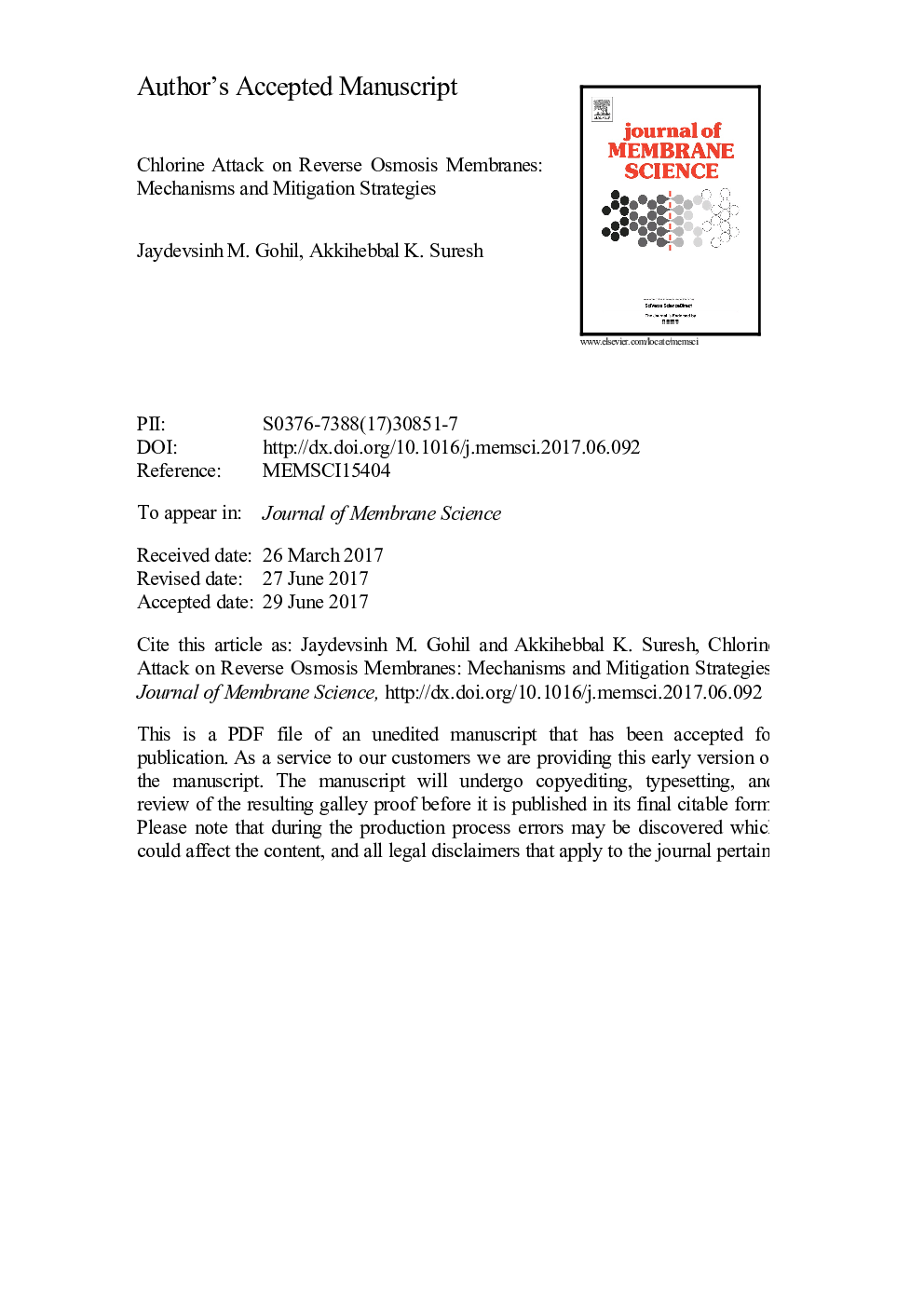| Article ID | Journal | Published Year | Pages | File Type |
|---|---|---|---|---|
| 4988451 | Journal of Membrane Science | 2017 | 81 Pages |
Abstract
Aromatic polyamide has emerged as the most prominent material for thin film composite (TFC) reverse osmosis and nanofiltration membranes. However, these membranes are susceptible to free chlorine attack, and lose their performance after about 1000 ppm h of chlorine exposure. This necessitates removal of chlorine from the feed water before desalination, leading to an increase in the cost of water treatment in desalination plants, especially for drinking water. Chlorine and chloramine being widely used disinfectants of drinking water the world over, a chlorine resistant membrane (CRM) is highly desirable to extend the membrane's life and bring down costs. This paper reviews the mechanisms of TFC membrane degradation by chlorine and strategies for its mitigation. Induced physiochemical changes by N-chlorination and concomitant ring chlorination reaction in presence of chlorinating agent are seen to be the major degradation mechanisms. Induced changes in physiochemical structure by chlorine attack can be assessed from the membrane characteristics and performance evaluation. The different approaches reported to develop CRMs have been reviewed extensively. These include: surface protection, coating with hydrophilic materials, use of chlorine scavengers, reducing chlorine sensitive sites, use of novel monomers and polymers for selective layer etc. Finally, the water permeability and salt rejection trade-off for native and modified membranes is discussed.
Keywords
mPDORPPVATPCLbLBTCTFCCRMIPCNHSNCMHBPTMCMBAN-hydroxysuccinimideSMBSSPAESSPMAN-(3-dimethylaminopropyl)-N-ethylcarbodiimide hydrochlorideCNTSMWCNTsSWCNTEDAQACEDC·HClpsfrGOEthylenediamineReverse OsmosisUltravioletGraphene oxideReduced graphene oxideSalicylaldehydeFTIRX-ray photoelectron spectroscopyFourier transform infrared spectroscopyXPSNanocomposite membraneLayer-by-layersodium metabisulfiteMulti-walled carbon nanotubesSingle-walled carbon nanotubeCarbon nanotubesdesalinationoxidation-reduction potentialPoly(phthalazinone ether sulfone ketone)Polyamidepolyethylene glycolPolysulfoneSulfonated poly(arylene ether sulfone)polyvinyl alcoholInterfacial polymerizationPEGQuaternary ammonium cationThin film compositeTrimesoyl chlorideGlutaraldehyde
Related Topics
Physical Sciences and Engineering
Chemical Engineering
Filtration and Separation
Authors
Jaydevsinh M. Gohil, Akkihebbal K. Suresh,
